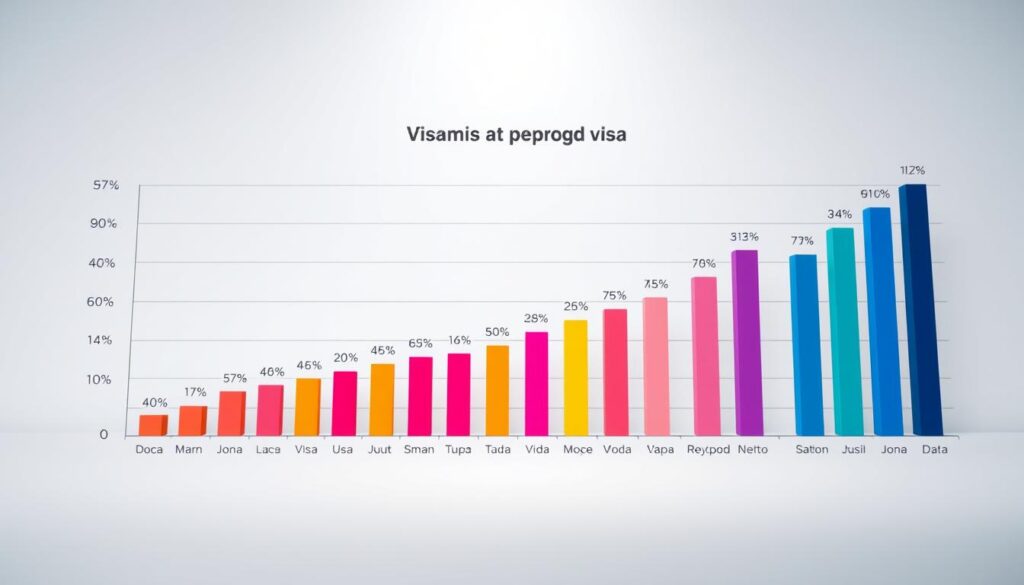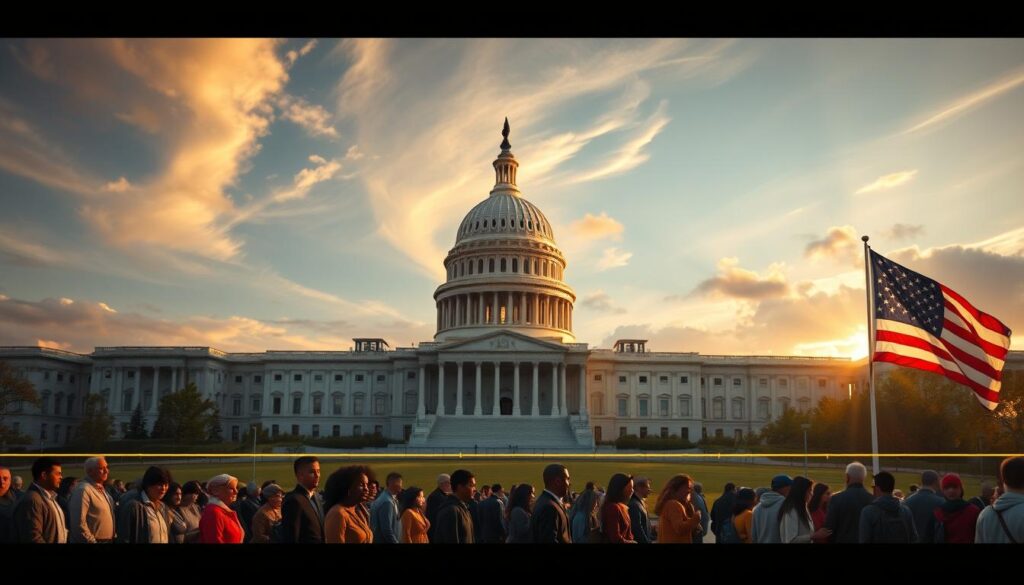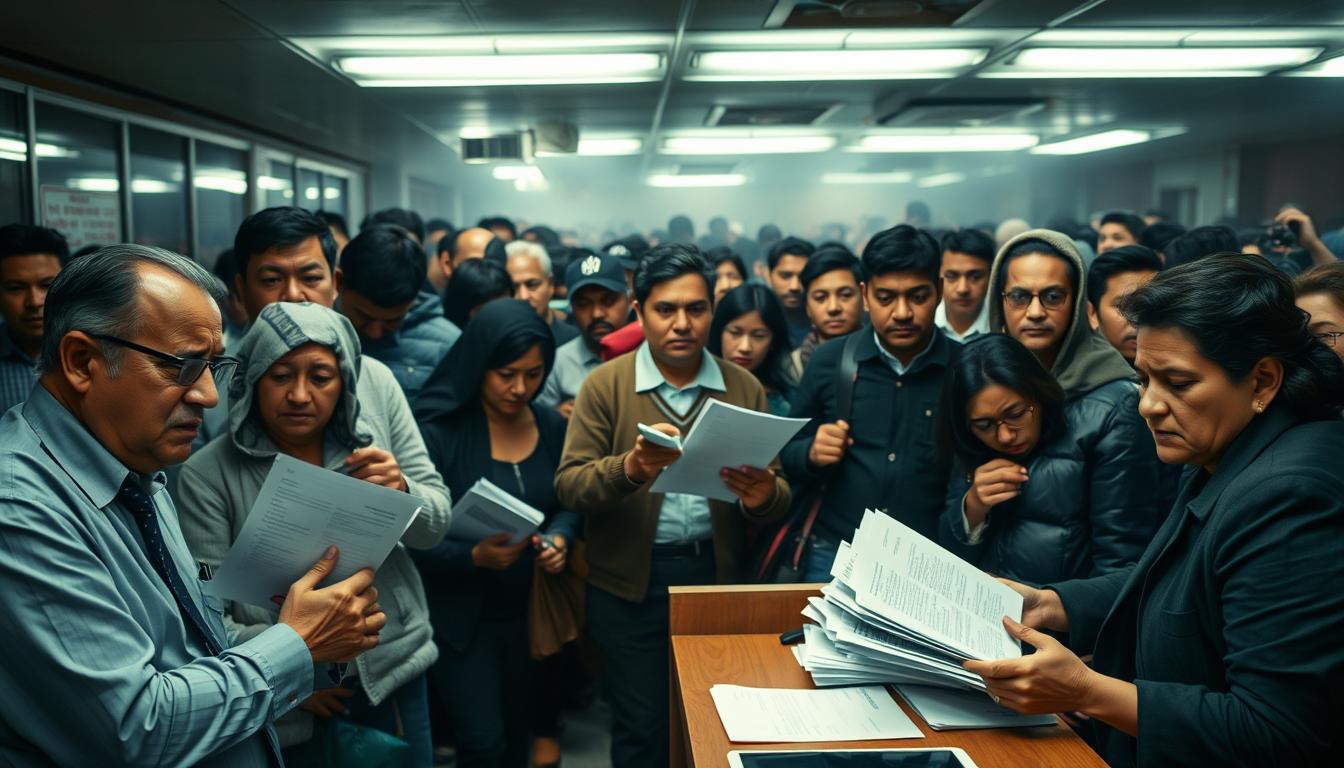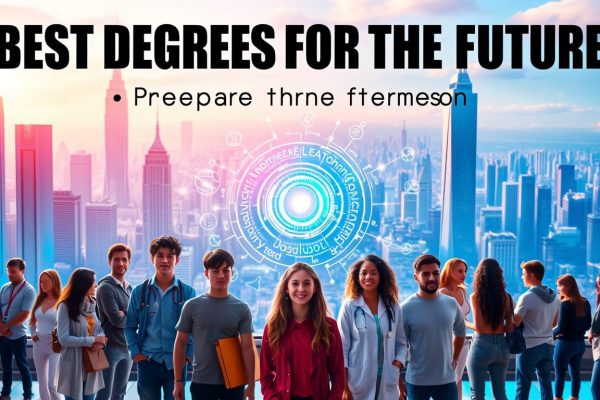There are many reasons behind the America’s Low Visa Ratio. We will demonstrate and learn why it happened years to years for every students from worldwide. The United States has long been a destination for immigrants seeking better opportunities, but the country’s immigration system faces significant challenges. The current system operates under a complex framework of caps and quotas that limit the number of visas issued annually.
The U.S. immigration system has maintained relatively low visa approval ratios compared to the demand, resulting in substantial backlogs. For instance, the annual statutory cap for H-1B visas is 65,000, with an additional 20,000 for foreign professionals graduating with advanced degrees from U.S. institutions.
The issue affects millions seeking to enter the United States for work, family reunification, or education. Understanding the factors behind this low ratio requires examining both historical immigration policies and current statutory limitations, including the 7 percent cap on green cards per country each fiscal year.
Key Takeaways
- The U.S. immigration system is governed by a complex system of caps and quotas.
- Low visa approval ratios have resulted in significant backlogs.
- The issue impacts various categories, including work, family reunification, and education.
- Historical immigration policies and current statutory limitations play a role.
- The 7 percent cap on green cards per country affects the overall visa ratio.
- Reforms are needed to address these challenges and improve the visa approval process.
The Current State of US Visa Approvals
Understanding the current state of US visa approvals requires examining recent trends and historical data to contextualize the fluctuations in approval rates. The united states has seen significant changes in its visa approval processes, impacting various categories of visas.
Key Statistics on Visa Issuance
The denial rates of new H-1B petitions for initial employment have shown a notable trend. They rose from six percent in FY2015 to a high of 24 percent in FY2018, before dropping to 21 percent in FY2019, 13 percent in FY2020, four percent in FY2021, and only two percent in FY2022. The denial rate for petitions for continuing employment was two percent in both FY2022 and FY2021.

Comparison with Historical Approval Rates
Historical data shows significant fluctuations in visa approval rates over the past several decades, with policy changes directly impacting approval percentages. The trend under different administrations has varied, with the Trump administration initially denying a larger percentage of H-1B petitions than in preceding years. Recent years have seen a reversal of this trend, with denial rates dropping to just 2 percent by FY2022, representing one of the lowest denial rate ever recorded.
Despite these fluctuations, the fundamental caps on visa numbers have remained largely unchanged since the Immigration Act of 1990. The historical comparison reveals that while administrative approaches to immigration and visa processing may change between administrations, the statutory limitations continue to be the primary constraint on visa ratios in the united states.
Historical Evolution of US Immigration Policies
Over the decades, the United States has witnessed a transformation in its immigration policies, from restrictive quotas to more inclusive preference systems. The country’s immigration laws have evolved significantly, reflecting changing societal attitudes, economic conditions, and political priorities.
From National Origin Quotas to Modern System
The Immigration and Nationality Act (INA) of 1965 marked a pivotal moment in this evolution, abolishing the national origin quota system and introducing a preference system that prioritized family relationships and employment skills. This legislation established seven preference categories for immigrants, focusing on family reunification and individuals with specialized skills. The shift from a quota-based system to a preference system was a significant change in US immigration policy.
The 1965 Act also maintained hemispheric quotas, with 120,000 visas allocated for the Western Hemisphere and 170,000 for the Eastern Hemisphere. This change reflected a more nuanced approach to managing immigration, taking into account both family ties and labor market needs.
Major Legislative Changes Since 1965
Subsequent legislation continued to refine the US immigration system. The Immigration Act of 1990 increased the total number of available visas to 675,000 annually, with 480,000 for family reunification and 140,000 for employment-based immigration. It also created the Diversity Visa program, allocating 55,000 visas to promote immigration from countries with historically low rates of immigration to the United States.
| Year | Legislation | Key Provisions |
|---|---|---|
| 1965 | Immigration and Nationality Act | Abolished national origin quotas; introduced preference system |
| 1990 | Immigration Act | Increased visa numbers; created Diversity Visa program |
| 2000 | American Competitiveness in the Twenty-First Century Act | Temporarily raised H-1B visa cap; exempted universities and nonprofits |
| 2004 | H-1B Visa Reform Act | Provided additional H-1B visas for high-skilled workers with advanced degrees |
The table above summarizes key legislative milestones in the evolution of US immigration policies, highlighting significant changes and their impact on the immigration system.

Why the Visa Ratio in America is low?
Understanding the low visa ratio in the United States requires examining several key factors. The immigration system is complex, with various statutory and administrative elements influencing visa approval rates.
Statutory Caps and Their Impact
The U.S. immigration system is governed by statutory caps that limit the number of visas issued annually. For instance, the H-1B visa category, which is crucial for highly skilled workers, has a cap that has not been significantly adjusted in recent years. During the Trump administration, the denial rate for new H-1B petitions for initial employment rose significantly, from 6% in fiscal year 2015 to 24% in fiscal year 2018. This increase in denial rates highlights the impact of administrative policies on visa approvals.
The statutory caps lead to a backlog of applications, resulting in delayed processing times. The Department of State’s monthly visa bulletin tracks green card availability, and the priority dates determine when applicants can receive their visas. This system creates uncertainty and unpredictability for individuals awaiting visa approval.
| Fiscal Year | H-1B Denial Rate |
|---|---|
| 2015 | 6% |
| 2018 | 24% |
| 2019 | 21% |
| 2020 | 13% |
| 2021 | 4% |
| 2022 | 2% |
Administrative Barriers to Approval
Beyond statutory caps, administrative barriers significantly contribute to America’s low visa ratio. Processing delays, complex documentation requirements, and shifting interpretations of eligibility criteria all reduce approval rates. The visa bulletin system, which relies on “priority dates,” adds to the administrative complexity.
Rigorous documentation requirements and high standards for proving “non-immigrant intent” for temporary visas create barriers that disproportionately affect applicants from certain countries. Security and background check procedures, while necessary, can significantly delay visa processing, contributing to lower approval rates, particularly for applicants from countries designated as higher security risks.
The immigration system in the United States faces challenges in balancing economy and security concerns. The number of immigrants and workers seeking to enter the country is substantial, but restrictions and complex procedures hinder the process.
The H-1B Visa Cap Challenge
The annual H-1B visa cap poses a substantial challenge for employers seeking to hire foreign talent in the United States. This cap, set by statute, limits the number of H-1B visas that can be issued each fiscal year, creating a bottleneck for both U.S. employers and foreign workers.
Understanding the 65,000 Regular Cap
The current annual statutory cap for H-1B visas is 65,000. This cap has been a subject of debate, as it has remained unchanged for many years despite the growing demand for skilled foreign workers. The 65,000 cap is often reached shortly after the filing period opens, leaving many applicants without a visa.
The selection process for the 65,000 regular cap is highly competitive. USCIS selects registrations for the 65,000 visa numbers first, and then additional selections are made for the master’s exemption cap. This process underscores the high demand for H-1B visas, exceeding the available supply.
| Category | Number of Visas | Median Wage (2021) |
|---|---|---|
| H-1B Workers | 85,000 (65,000 + 20,000 exemption) | $108,000 |
| U.S. Workers | N/A | $45,760 |
The 20,000 Advanced Degree Exemption
Beyond the regular cap, an additional 20,000 H-1B visas are available for foreign professionals who have earned advanced degrees from U.S. institutions of higher education. This exemption was created by the H-1B Visa Reform Act of 2004 to retain foreign talent educated in the United States.
The advanced degree holders who receive these visas earn significantly higher wages than average U.S. workers. According to data, the median wage for H-1B workers was $108,000 in 2021, compared to $45,760 for U.S. workers generally. Moreover, between 2003 and 2021, the median wage of H-1B workers grew by 52%, outpacing the 39% growth for all U.S. workers during the same period.
“The H-1B visa program is crucial for U.S. employers to compete in the global economy by allowing them to hire the best talent from around the world.”
The wage growth disparity highlights the value that H-1B workers, particularly those with advanced degrees, bring to the U.S. economy. Despite this, the combined total of 85,000 visas remains insufficient to meet the demand, with both caps typically being reached shortly after the filing period opens each fiscal year.
Country-Specific Visa Rejection Rates
Country-specific visa rejection rates reveal a nuanced landscape of barriers and challenges in the U.S. visa application process. The rate at which visa applications are rejected varies significantly across different countries, reflecting a complex interplay of geopolitical, economic, and administrative factors.
Nations with the Lowest Rejection Rates
Some countries have relatively low visa rejection rates, indicating a more straightforward application process for their citizens. While specific numbers can vary, these nations generally have strong diplomatic ties with the United States and stable economic conditions. However, the focus is often on countries facing higher barriers.
Countries Facing Highest Barriers
At the opposite end of the spectrum, several countries face exceptionally high visa rejection rates, creating nearly insurmountable barriers for their citizens seeking to visit, work, or study in the United States. The rejection rates for these nations are stark:
- Nigeria: 29.23%
- Ukraine: 34.29%
- Iraq: 37.09%
- Russia: 39.49%
- Pakistan: 40.82%
- Afghanistan: 48.73%
- Canada: 52.04%
- Iran: 53.26%
- Liberia: 78.19%
- North Korea: 100%
These high rejection rates often stem from factors such as strained diplomatic relations, security concerns, economic instability in the country of origin, and historical patterns of visa overstays or violations. For individuals from these countries, the visa application process can be particularly challenging, with heightened scrutiny of their documentation, financial resources, and ties to their home country. The extreme variation in rejection rates—from 0% to 100%—underscores how geopolitical factors and bilateral relations significantly influence America’s visa rate beyond the statutory caps themselves, with some countries facing rejection rates of over 50 percent.
The Registration and Selection Process
The United States Citizenship and Immigration Services (USCIS) employs a specific registration and selection process for H-1B visa applications. This process is critical in determining which applicants can proceed with filing their petitions.
Beneficiary-Centric System
The USCIS uses a beneficiary-centric system for the registration process. Under this system, registrations are counted based on the number of unique beneficiaries registered, with each beneficiary counted only once. This approach ensures fairness and reduces the chance of duplicate registrations.
Lottery Selection Mechanics
If the USCIS receives more registrations than there are visa numbers available, the agency conducts a lottery to determine which registrants can file an H-1B petition. The selection process first allocates the 65,000 regular cap visas, followed by the 20,000 advanced degree exemption visas. For the Fiscal Year (FY) 2025, the USCIS initially selected 114,017 beneficiaries in April 2024, corresponding to 120,603 registrations. A second selection was conducted in August 2024, resulting in an additional 13,607 beneficiaries being selected.
The lottery system introduces significant uncertainty for both employers and potential employees. Even highly qualified candidates have no guarantee of selection, regardless of their qualifications or the employer’s needs.
| Fiscal Year | Initial Beneficiaries Selected | Registrations Selected | Additional Beneficiaries Selected | Total Registrations Selected |
|---|---|---|---|---|
| 2025 | 114,017 | 120,603 | 13,607 | 14,534 |
The USCIS typically selects more registrations than the actual number of visa numbers available, anticipating that some selected registrants will not follow through with filing petitions or will have their petitions denied. This process is a crucial part of the H-1B program, affecting thousands of employers and applicants each year.
Economic Implications of Low Visa Ratios
The economic implications of low visa ratios in the United States are multifaceted and far-reaching. Restrictive visa policies, particularly those affecting H-1B visas, have been shown to impact the U.S. economy in various ways.
Impact on US Labor Market
The U.S. labor market is significantly affected by the low visa ratio, as it limits the influx of skilled foreign workers. A recent study found that restrictions on H-1B visas motivate U.S.-based multinational corporations to decrease the number of jobs they offer in the country. Instead, these corporations increase employment at their existing foreign affiliates or open new ones, particularly in countries like India, China, and Canada.
This shift not only reduces domestic hiring but also potentially leads to a loss of talent and innovation in the U.S. labor market. With a reduced pool of skilled workers, U.S. employers may struggle to fill critical occupations, ultimately affecting the overall economy.
| Economic Indicator | Impact of Low Visa Ratio | Potential Consequences |
|---|---|---|
| Domestic Hiring | Decrease in domestic job offerings | Loss of talent and innovation |
| Foreign Employment | Increase in employment at foreign affiliates | Shift of economic activity abroad |
| Innovation | Reduced patent filings and citations | Impeded intellectual property development |
Lost Opportunities for Innovation
The restrictive visa policies result in significant lost opportunities for innovation, as talented individuals who could contribute to technological advancement and economic growth are unable to enter or remain in the country. A study conducted in 2019 revealed that higher rates of successful H-1B applications were positively correlated with an increased number of patents filed and patent citations.
Moreover, startups with successful H-1B employees were more likely to secure venture capital funding and achieve successful IPOs or acquisitions. The COVID-19 pandemic highlighted the importance of immigrant innovation, as eight U.S. companies that participated in developing COVID-19 vaccines had received approvals for 3,310 foreign scientists through the H-1B program between FY2010 and FY2019.
The Family-Based Immigration Bottleneck
The US immigration system is experiencing a severe bottleneck in family-based visa applications, resulting in extended wait periods. This backlog affects numerous individuals and families seeking to reunite with their loved ones in the United States.
Preference Categories and Their Limitations
The family-based immigration system categorizes applicants into different preference categories, each with its own set of rules and limitations. The Department of State issues a monthly visa bulletin that tracks green card availability for each category. To understand the waiting times, one must look at the category by which one is immigrating and then move sideways to the country of origin to see the applicable priority date.
For instance, the F3 category for Filipino siblings of US citizens had a priority date of June 8, 2002, as of October 2023, representing a wait time of over 21 years. Similarly, Mexican adult married children of US citizens faced even longer waits, with a priority date of March 8, 1998, indicating a 25-year backlog.
Waiting Times for Family Reunification
The waiting times for family reunification are staggering, with some applicants waiting decades before being able to join their families in the US. The Department of State’s monthly visa bulletin reveals the severity of these backlogs, with some family preference categories showing priority dates from more than 20 years ago.
These extreme waiting periods often separate families for a generation or more, forcing difficult choices between maintaining family unity and pursuing economic opportunities or safety in the United States. The current immigration system faces significant challenges in addressing these backlogs, highlighting the need for potential reforms to alleviate the suffering of affected families.
Employment-Based Visa Challenges
The current state of employment-based visas in the US is marked by substantial hurdles for both employers and immigrants. The demand for employment-based visas, particularly the H-1B visa, has been consistently high, driven by the needs of various industries.
Demand vs. Available Visa Numbers
The H-1B visa program is a critical pathway for foreign workers in specialty occupations. However, the annual cap of 85,000 visas (65,000 for bachelor’s degree holders and 20,000 for master’s degree holders from US institutions) often falls short of meeting the demand. For instance, in the fiscal years 2017 to 2022, major tech hubs like the New York City metropolitan area, San Jose, San Francisco, and Dallas accounted for a significant proportion of H-1B visa petition approvals.
The limited availability of visas leads to a competitive environment where not all deserving candidates can secure a visa. This scarcity is particularly challenging for small and medium-sized enterprises that may not have the same resources as larger corporations to navigate the complex application process.
Industry-Specific Impacts
The challenges created by America’s low visa ratio affect different industries to varying degrees. The technology sector, for example, is heavily reliant on foreign talent. Major tech hubs have been significant beneficiaries of the H-1B program, with the New York City metropolitan area receiving 372,100 H-1B approvals from FY2017-2022, accounting for 15.2% of all H-1B approvals in the country.
| Industry | H-1B Approvals (FY2017-2022) | Percentage of Total Approvals |
|---|---|---|
| Technology | 372,100 (New York City metropolitan area) | 15.2% |
| Technology | 215,700 (San Jose) | 8.8% |
| Healthcare | N/A | N/A |
Healthcare also faces critical shortages exacerbated by visa limitations, with many medical doctors on the front lines of the COVID-19 pandemic present in the United States on H-1B visas. The scientific research community relies heavily on international talent, as evidenced by the 3,310 foreign biochemists, biophysicists, chemists, and other scientists approved through the H-1B program between FY2010 and FY2019 for companies that later developed COVID-19 vaccines.
The 7% Per-Country Cap Problem
The US immigration system faces a substantial challenge due to the 7% per-country cap. This cap limits the number of visas issued to individuals from any single country, leading to significant backlogs for countries with high demand.
Many countries, such as Mexico, China, and India, have a large number of individuals seeking to immigrate to the United States. However, the current preference category system only allows for 675,000 green cards, resulting in substantial wait times for those from high-demand countries.
Disproportionate Effects on High-Demand Countries
The per-country cap disproportionately affects countries with a high volume of immigration applicants. For instance, countries like India and China have enormous backlogs due to the limited number of visas available.
- Indian nationals face severe backlogs, with wait times for EB-2 and EB-3 categories estimated to exceed 50 years.
- Chinese nationals also experience significant delays, with waits of 10-20 years common in employment-based categories.
Case Study: India and China Backlogs
The cases of India and China illustrate the dysfunctional backlogs created by the 7% per-country cap. Indian nationals seeking employment-based green cards face particularly severe backlogs.
These backlogs result in numerous personal and professional hardships, including missed promotion opportunities, constant uncertainty about long-term status, and the risk of “aging out” for children of applicants.
Documented Dreamers and Aging Out Issues
Documented Dreamers face a critical juncture when they turn 21, potentially disrupting their immigration status. At this age, if their parents’ green card applications have not been approved, these young adults “age out” of their dependent status. This change can have severe consequences, including removal from the green card queue and potential deportation.
The Plight of Children in the System
Children growing up in the U.S. under their parents’ immigration status often consider America their home. However, when they turn 21, they face an uncertain future if their parents’ green card applications are still pending. The consequences of aging out can be dire, leaving them vulnerable to deportation to countries they may not remember or have never lived in as adults.
- These young adults must scramble to find alternative visa options, such as student visas or employer-sponsored work visas, often with limited time and significant expense.
- If unable to secure independent status, they face the prospect of self-deportation, despite having grown up as Americans in all but legal status.
Consequences of Turning 21 While Waiting
When Documented Dreamers age out, they are removed from their family’s green card application. They may later apply through other preference categories, such as F2B or F1, once their parents obtain permanent status or U.S. citizenship. However, this process can lead to decades-long waits and creates a painful choice: maintaining family unity by returning to countries with fewer opportunities or separating from family to pursue education and career goals.
Key consequences include:
- Potential deportation to a country they barely know.
- Starting at the back of a new immigration queue.
- Decades-long waits for alternative visa categories.
Visa Denials: Common Reasons and Patterns
Understanding the reasons behind visa denials is crucial for applicants seeking to successfully navigate the US immigration system. The process of obtaining a visa can be complex, with various factors contributing to the outcome of an application.
Several key issues lead to visa denials, including documentation and intent issues, as well as security and background check factors. Applicants must ensure that their documentation is complete and accurate, and that their intent for visiting or immigrating to the US is clearly demonstrated.
Documentation and Intent Issues
One of the primary reasons for visa denials is related to documentation and the applicant’s stated intent. Insufficient or inaccurate documentation can lead to rejections, as can doubts about the applicant’s true intentions. Ensuring that all required documents are submitted and that the application clearly states the purpose of the visit is crucial.
- Incomplete or inaccurate documentation can result in visa denials.
- Doubts about the applicant’s intent, such as plans to overstay or work illegally, can also lead to rejections.
Security and Background Check Factors
Security concerns and background check issues represent another significant category of visa denials. Enhanced screening procedures, particularly for applicants from high-risk countries or with certain criminal histories, can lead to additional scrutiny and potential denials.
- Applicants from countries with significant terrorist activity or designated as state sponsors of terrorism face intensive vetting.
- Criminal history, even for minor offenses, can impact visa eligibility, though waivers may be available under certain circumstances.
The US visa application process is rigorous, and understanding the common reasons for denials can help applicants better prepare their submissions. By addressing potential issues related to documentation, intent, security, and background checks, applicants can improve their chances of a successful outcome.
Comparing US Visa System with Other Countries
A comparative analysis of visa systems across different countries highlights the strengths and weaknesses of the U.S. approach. The United States has a complex immigration system that is often scrutinized for its efficiency and fairness.
When comparing the U.S. visa system to other nations, two models stand out: the points-based systems of countries like Canada and Australia, and the approaches taken by the European Union.
Points-Based Systems (Canada, Australia)
Countries like Canada and Australia have adopted points-based immigration systems that prioritize skill sets over specific job offers. This system allows for a more flexible approach to attracting immigrants who can contribute to the economy. For instance, Canada’s Express Entry program assesses candidates based on factors like age, education, and work experience, awarding points accordingly. Similarly, Australia’s points-based system focuses on skilled workers who can fill labor gaps.
European Union Approaches
The European Union has developed innovative immigration approaches, including the EU Blue Card program, designed to attract highly skilled workers from outside the EU. Unlike the U.S. H-1B visa, which is subject to strict numerical caps, the EU Blue Card has no predetermined quota, allowing individual member states to determine the number issued based on their labor market needs. Additionally, the EU’s approach to intra-EU mobility and specialized visa pathways for entrepreneurs, investors, and digital nomads offers greater flexibility compared to U.S. options.
While the U.S. immigration system faces challenges, examining alternative approaches from other countries can provide valuable insights for potential reforms. By understanding different types of immigration policies and their impacts, the U.S. can explore new pathways to improve its own visa system.
Proposed Reforms to Increase Visa Approval Rates
Reforming the US visa system could significantly improve approval rates. The current immigration system faces challenges that lead to low visa approval rates, affecting immigrants and the economy.
Legislative Initiatives
Legislative changes are crucial for addressing the statutory caps and other legal barriers that contribute to low visa approval rates. Proposed legislative initiatives aim to increase the number of visas available and make the immigration process more efficient. For instance, raising or eliminating the annual caps on certain types of visas could help reduce backlogs and increase approval rates.
Administrative Policy Changes
Beyond legislative reforms, administrative policy changes could significantly improve America’s visa ratio without requiring congressional action. The executive branch could implement more efficient processing procedures, reduce unnecessary documentation requirements, and standardize adjudication criteria to decrease arbitrary denials. For example, USCIS could expand premium processing options to more visa categories, allowing applicants to pay an additional fee for expedited processing and reducing overall processing times.
Administrative interpretations of visa eligibility criteria could be clarified and made more consistent across consular posts to reduce disparities in approval rates based on location. The Department of State could revise the visa bulletin system to provide greater transparency and predictability regarding wait times, helping applicants make more informed decisions about their immigration options.
The Future of America’s Visa System
As the United States navigates the complexities of its immigration policies, the future of its visa system remains uncertain. The U.S. immigration system has undergone significant changes since its inception in the 19th century. However, remnants of the national origin quota system persist, with each country allocated a maximum of 7 percent of available green cards in each preference category each fiscal year.
This system has led to substantial backlogs, particularly for countries with a high demand for immigration to the U.S. The consequences are far-reaching, keeping families separated, negatively impacting the economy, and disincentivizing legal immigration. To address these issues, Congress should consider updating the legal immigration quota system to better align with contemporary family and economic needs.
Several factors will shape the future of America’s visa system. Demographic and economic trends suggest increasing pressure to reform the system due to labor shortages and global competition for talent. Technology, including artificial intelligence and blockchain, is likely to play a crucial role in streamlining visa processing. Global events such as climate change and economic disruptions will continue to influence migration patterns.
Without significant reforms, the low visa ratio is likely to persist, affecting family unity, economic growth, and America’s global competitiveness. Meaningful reform must balance multiple priorities: security, family unity, economic needs, and humanitarian concerns. Potential reforms include eliminating per-country caps, protecting Documented Dreamers, and increasing visa numbers for high-demand categories. By addressing these challenges, the U.S. can create a more efficient, fair, and responsive visa system.











